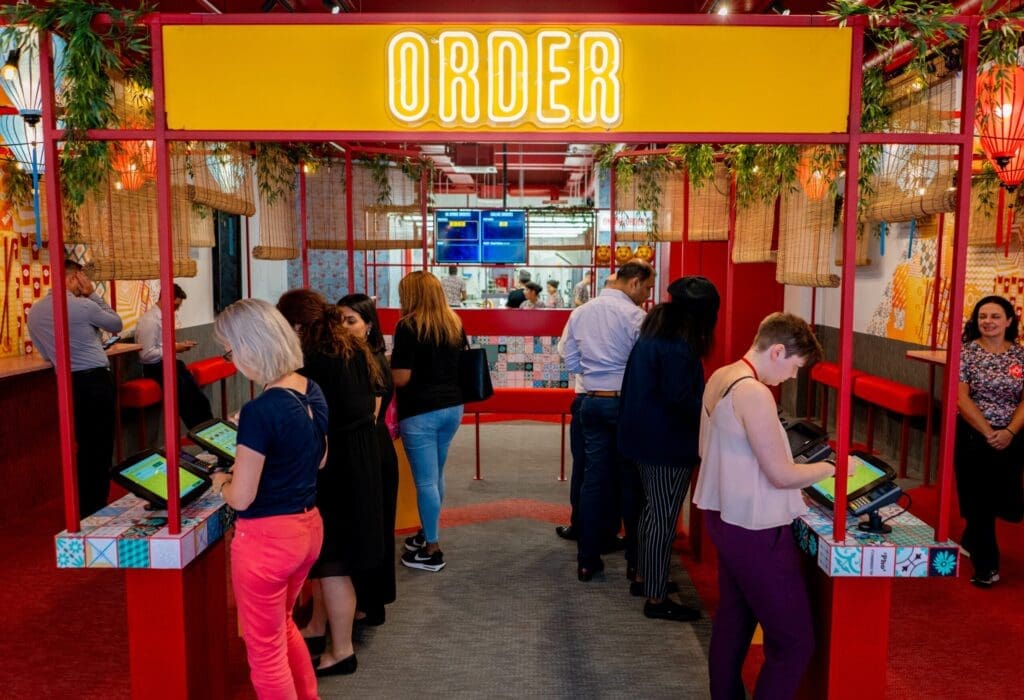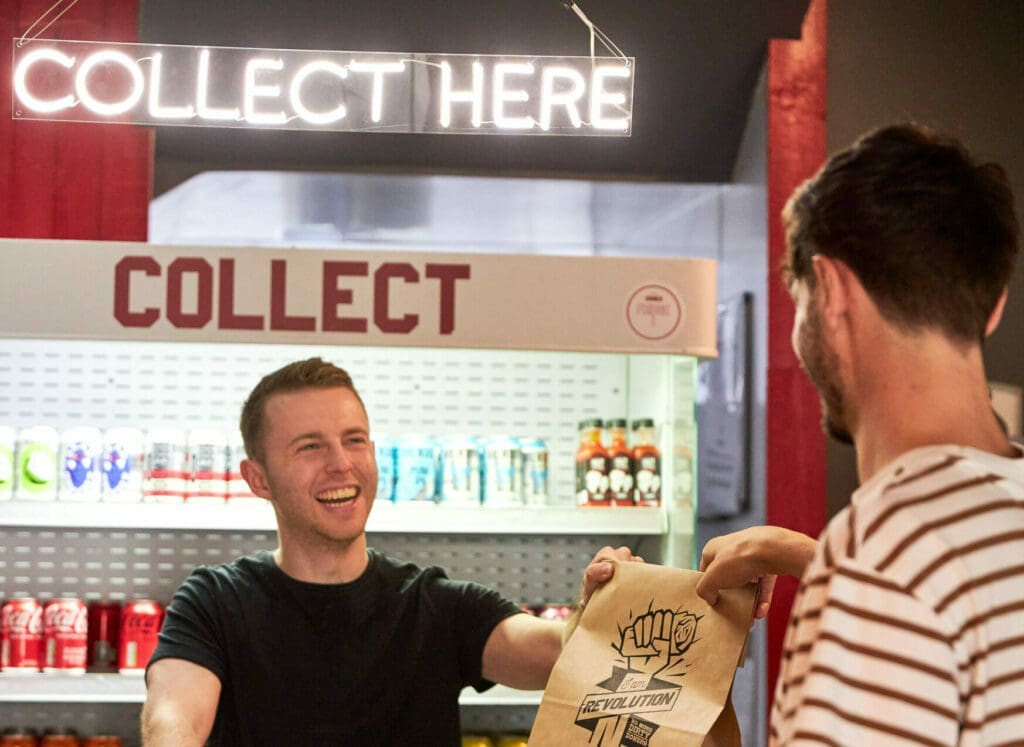And they’re massively popular with customers. 60% of consumers say they’d be more likely to visit a location if kiosks were available, for example.
When I am Doner introduced kiosks, they soon saw 99% of on-premise orders going through this digital channel.
“Self-order kiosks are the future of fast food restaurants. By making them our main in-store ordering method, it’s freed up labour to the extent that it’s like having one additional employee.”
– Bridie Fox Operations Director, I am Doner

It’s not just about the savings on labour, either.
Digital ordering channels boost ATV organically, by upselling the customer more effectively than a human ever could. Crêpeaffaire has seen a massive 49.5% increase in ATV across digital ordering channels.
This can significantly increase your operation’s profitability, helping offset the increasing cost of labour.
“Seeing a 20% increase in ATV and a 35-40% decrease in labour costs is a fantastic result.”
– Paul Hopper
Founder, HOP Vietnamese
2. Integrate third-party delivery orders
Managing multiple delivery partners can be so much admin that it easily makes up a full-time job in the rota.
In some operations, team members are still manually entering orders from Deliveroo, Just Eat, and other third parties into a POS so they can be processed in the kitchen. Not only does this take up precious time, but it also easily results in costly human error.
With the cost of labour so high, dedicating a team member to this time sink is a drain on resources that most operators can’t afford.
But new approaches to hospitality tech provide a solution to this that eases the demand on your team.

One of the huge benefits that the I am Doner team saw when they moved to a single system was the integration of all third-party delivery partners into one, automated process.
Now, every order from every channel – including delivery partners – comes through automatically to the Kitchen Management System, without needing to be manually processed. You’ll be surprised how many hours of labour you can save with this simplified approach.
“The delivery aggregator hub has been absolutely revolutionary. Before you would have to have somebody answering the phone, taking orders, processing UberEats orders, and processing Just Eat orders. Whereas now everything comes through the system straight onto our KDS screens in the kitchen. It’s easily cut 10 hours of staff labour“
– Paul Baron
Founder, I am Doner




